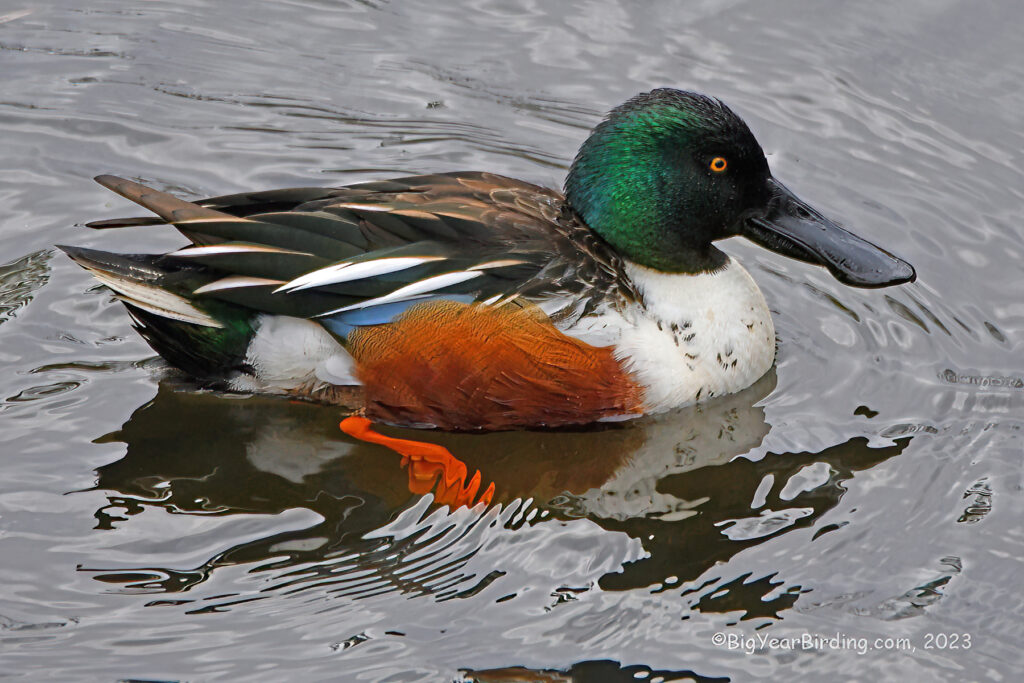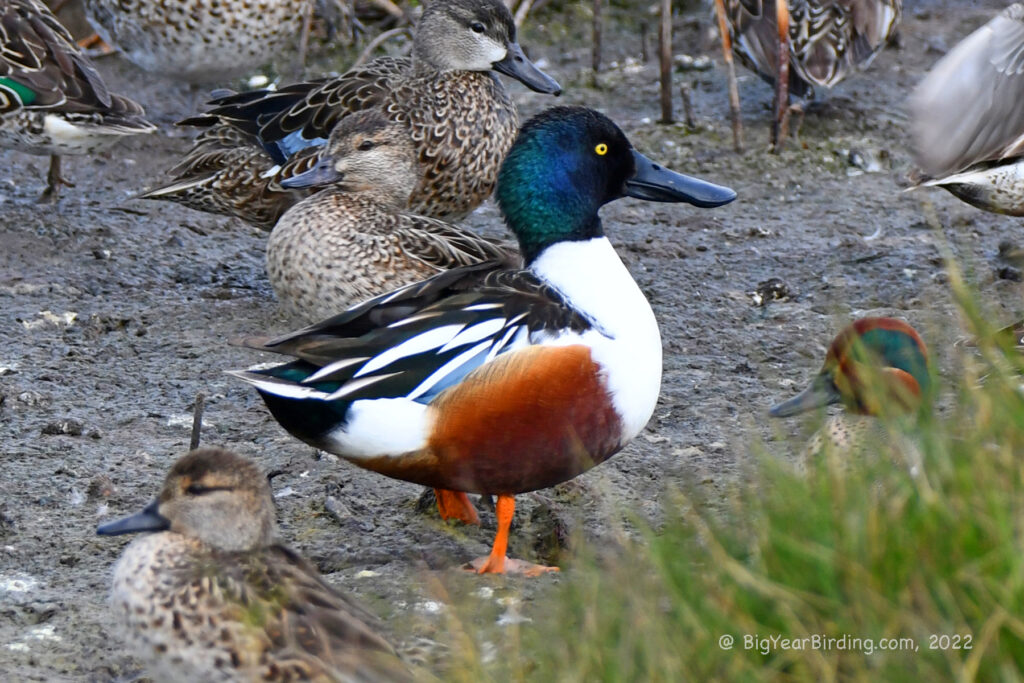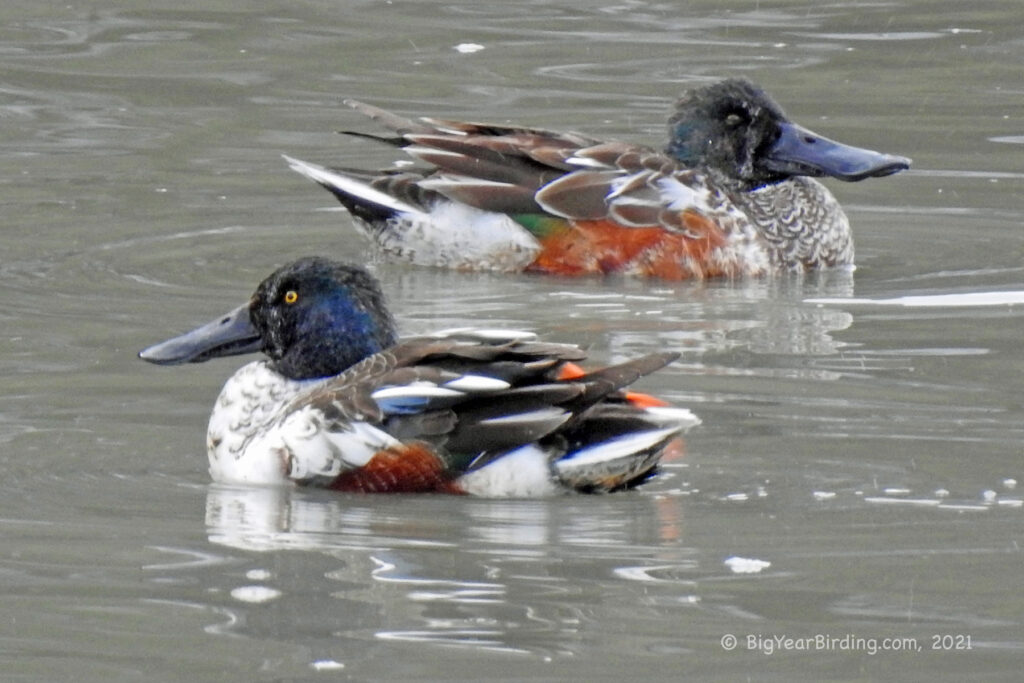
The Northern Shoveler is a medium-sized duck species that can be found across North America, Europe, and Asia. They are recognizable for their unique, large, spoon-shaped bills, which they use to filter food from the water. Adults can range from 18 to 22 inches in length and weigh between 1 and 2 pounds. Males are generally larger than females, with longer bills.

One of the most distinguishing field marks of the Northern Shoveler is their bill. It is long, wide, and spoon-shaped, with a black stripe running down the middle. Their heads are iridescent green, and their bodies are a mixture of white, black, and rust-brown feathers. Males have bright orange-brown flanks, while females are more muted in color. In flight, the Northern Shoveler’s wings produce a distinctive whistling sound.
Northern Shovelers are migratory birds and breed in the northern parts of North America, Europe, and Asia. During the winter, they migrate to southern parts of their range, including the southern United States, Mexico, and parts of Europe and Asia. They can be found in a variety of wetland habitats, including marshes, swamps, and ponds, where they forage for aquatic vegetation, seeds, and invertebrates.
Breeding Northern Shovelers prefer to nest near water, often in grassy areas near ponds or lakes. They typically lay between 9 and 12 eggs, which hatch after about 3 weeks of incubation. The young ducklings are able to feed themselves shortly after hatching, and they are capable of flight after about 6 weeks.

Overall, the Northern Shoveler is a unique and fascinating species of duck that can be easily recognized by their large, spoon-shaped bill. Their migratory habits and diverse habitat preferences make them a common sight in wetlands across North America, Europe, and Asia. Their distinctive whistling flight call and colorful breeding plumage make them a favorite of birders and nature enthusiasts alike.

